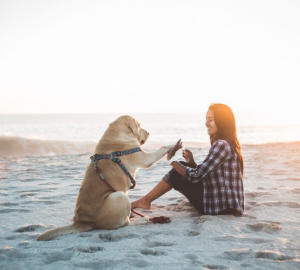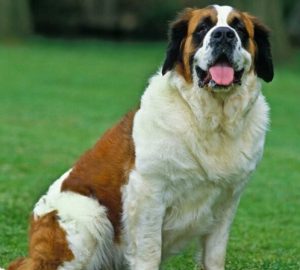Are you noticing that your pooch is looking a little bulky than usual? Are you worried about your dog’s increasing weight? Getting bulky is not something that only humans face. Even pets also face this problem.
As per the survey conducted Association for Pet Obesity Prevention in 2018, it was found that nearly 60% of dogs in the United States are obese, or we can also say overweight.
Being a dog owner, you must know that extra weight can lead to various health problems for your dog, such as diabetes, heart problems, arthritis, and others. In North America, around 40-45% of dogs aged between 5 and 11 weigh higher than normal.If you are looking for ways to determine whether your dog is overweight or not, this guide will help you to get information about what obesity means, its associated health problems, and how you can help your dog lose extra pounds.
What is Obesity?
Obesity is a build-up of excess body fat. When we talk about extra body weight and extra body fat, both these things go parallel. So, when it comes to overweight dogs, they also have excess body fat.
When you want to assess if you have an obese or overweight dog, it is easy to measure the bodyweight. Always keep in mind that measuring bodyweight is easier than measuring body fat. Your dog can be overweight when its weight is 10-20% more than the ideal body weight. Your dog can be obese when its weight is 20% or more than the ideal body weight.
The other way to check if your dog is overweight is if you do not feel your dog’s ribs touching its chest. This is one of the signs that indicate your dog is overweight or even obese.
Health Issues Associated with Dog Obesity
Many of you may be well aware of the fact that even a little bit of extra weight arrives with one or another health issue. In addition to this, being overweight also impacts negatively on the quality of life. Just like humans, dogs also experience much pressure on all their organs.
Always keep in mind that overloaded organs can result in various diseases, and in severe cases, it can lead to death. If your dog is overweight, they are at high risk of some serious health conditions. These include arthritis, diabetes, breathing problems, cancer, respiratory issues, high blood pressure, and even joint injuries.
Every dog owner must also know that overweight dogs are more likely to have a shorter lifespan. Due to this reason, it is important to understand what factors have led to your dog being overweight as well as how you can help them lose weight and recover full health.
Developing a Dog Weight Loss Plan
If your vet has determined that your dog is overweight or obese, it is important to start a weight loss plan as early as possible. It must involve two things, one is to reduce calorie intake, and another one is to increase the time for exercising your dog.
You can start by encouraging your dog to exercise for 10-15 minutes every day. Just start with a walk and then run. Make sure to increase this amount of time gradually from normal walking to brisk walking of up to 2 hours every day. This time will depend on your dog’s breed and age.
You can make this exercise fun by rewarding your dog with a lot of attention. It will help greatly in keeping your dog active. You can also enroll your dog in canine agility class as it will work greatly becoming a part of your dog’s exercise routine. You can also involve your pup in some canine sports as this can be great fun and exercise for you and your dog.
The best idea is to consult a vet and develop a calorie and quantity-control weight loss plan to work on your dog obesity. Do you know that if you reduce your dog’s amount of food per day by 10%, it will help in losing its weight? Due to this reason, vets for pets recommend giving high-fiber and low-calorie food to your dog. It will help them feel fuller for longer. Here we suggest a few brands which you can try. Once you are aware of the amount of food to feed your dog every day, you can divide that total amount for morning and evening meals. It will work great in avoiding your dog feeling hungry later in the day.
Five Steps of Weight Loss Journey Of Overweight Dog
1. Find the ideal weight and calorie needs of your dog
The very first step is to find the ideal weight of your dog, which in turn will help you determine its daily calorie needs. You can do this using various ways. One of the best ways is to talk to your vet as he/she is well-versed with the health needs of almost all dog breeds.
But, if you can’t see the vet right away, you can go through the chart by the Association for Pet Obesity Prevention to determine the ideal weight of your dog. Once you are done with the ideal weight, you can look for the daily calorie needs of your dog based on its weight. Once you are done with both calculations, you are now ready to start the weight loss journey of your overweight dog.
2. Food consumption
It is very important to look at the food consumption of your pet. Just check the amount of food you feed to your dog and how often.
- If you have a habit of keeping your dog’s food bowl always full of food, now it’s time to pick that bowl up. Just like humans, dogs eat whenever they find something to eat or when they are bored. So, when you switch the feeding time to twice a day, it will help in keeping your dog from overeating.
- The dog gets hungry after every 5-8 years, so leave its stomach empty until the next feeding time. If you feed your dog once a day, you will feed him too much in just one go. Also, your dog will get hungry between these meals, and you may find him begging for food, or he will just get into the trash to find something to eat. Always remember that if you give frequent meals in a small quantity, it will maintain the calorie level and energy more efficiently.
- When you learn to manage your dog’s food, you will achieve the goal of maintaining your dog’s weight. You need to use the correct size of measuring cup to make sure that you do not overfeed your dog. For example, if you use a scoop of the coffee cup to measure the amount of food, it is probably too much. You can also feed high fiber and low-calorie veggies to your dog as they can help in adding a feeling of fullness for a long time after each meal.
Focus on weight-loss food
Dog obesity is one of the major concerns while maintaining your dog’s health. When you find that your dog is overweight, you should start focusing on weight-loss food. These foods contain high-quality proteins, lower fats, and lower calories. If food has high protein, it means your dog will get all the essential fatty acids that are required for optimum health while on a weight loss journey.
You can also find weight loss foods that contain high carbs used as fillers. But, you should consider these types of foods as they make your dog feel full for longer. But, at the same time, keep in mind that they do not meet the nutritional needs of your dog. So, opt for high-protein dog food that supports greatly improving your dog’s overall health.
Transition to a new food
Once you choose the weight loss food for your dog, make sure to go with a gradual transition to the new food. If you feed your dog the new food quickly, it can lead to serious digestive issues.
The right proportions include:
- 75% old food and 25% new food to 1-2 days
- 50% old food and 50% new food to 3-4 days
- 25% old food and 75% new food to 5-6 days
- 0% old food and 100% new food to 7 days
If you find that your overweight dog is showing any sign of stomach upset, diarrhea, or excess gas during this transition period, immediately slow down the process and add 1-2 days to each stage.
3. Avoid too many treats
It is ok to pamper your dog or to reward him with treats. But, too many treats are not good for their health. It can result in dog obesity, especially when you offer treats every other day or you are giving high fat and high-calorie treats.
You must know that treats should always be only 10% of the calorie intake of your pup. It means that the remaining 90% of daily calories should be consumed from a nutritionally balanced diet. This can be any food, such as kibble food, homemade dog food, or wet dog food.
There are also many fruits and vegetables that your dog will love to eat as much as dog treats. These fruits and vegetables also contribute greatly to your dog’s overall health. You can give their favorite fruits or vegetables as treats during their weight loss journey.
Make exercise plan
Do you know that making an effective exercise plan is a great way to gain success in your dog’s weight loss? It is vital to get at least 15-20 minutes of exercise a day. If you do walk with your dog daily, just make sure that your walk should be brisk enough to burn some calories of your dog. You can go with both indoor and outdoor exercises for your dog. Fetching is one of the best games for an overweight dog.

You can create an exercise plan as per your dog’s breed and your schedule. If you can spend time with your dog in the evening or when it is dark, you can meet your dog’s energy needs with a laser pointer. Let him chase the laser dot until you find him tired. Many dogs get excited seeing the laser pointer. Also Read: Dog Training Tips – How To Train Your Doggo
4. Get weight check-up regularly
Make sure to check your dog’s weight on a regular basis, as it will help in keeping the right track of your dog’s calories and activity levels. If you notice that your dog is losing weight quickly or not losing it at all, it means you need to make some changes to the weight loss program accordingly.
If you have a large dog, you can visit the vet to measure your dog’s weight. If your dog is small, you can weigh him at home by just picking and weighing him.
When you weigh your dog frequently, it will help you to make any adjustments needed quickly. Discuss all issues with your vet, and he/she will advise you for the required adjustments in your dog’s diet and enjoy a successful weight loss journey.
FAQs
Why do dogs become overweight?
There are a number of reasons that make dogs overweight or obese. The common reasons are too many or wrong type of calories intake and not enough exercise. Other factors that bring a negative impact on a dog’s weight are age, breed, psychological issues, lifestyle, hormone imbalances, and genetics.
How much exercise does an overweight dog need?
If you want your dog to lose his/her weight, exercise plays a great role in shedding those extra pounds. If your dog is not habitual of any activity, you need to increase the amount of exercise slowly. The best idea is to start with 10 minutes of exercise and gradually increase it until you reach at least 30 minutes of exercise daily.
If you exercise your dog for a minimum of 15 minutes two times a day, this will help your dog in consuming energy, increasing metabolism rate, and reducing body fat. These exercises may include a brisk walk, playing ball, fetching games, swimming, etc.
How much food is good to improve dog obesity?
The amount of food your dog should be fed depends on the caloric density of a particular food. The amount of calories your pooch uses depends on the daily energy needs of your dog as well as the amount of exercise your dog receives. It is also recommended to use a measuring cup to feed the accurate amount to your overweight dog.








